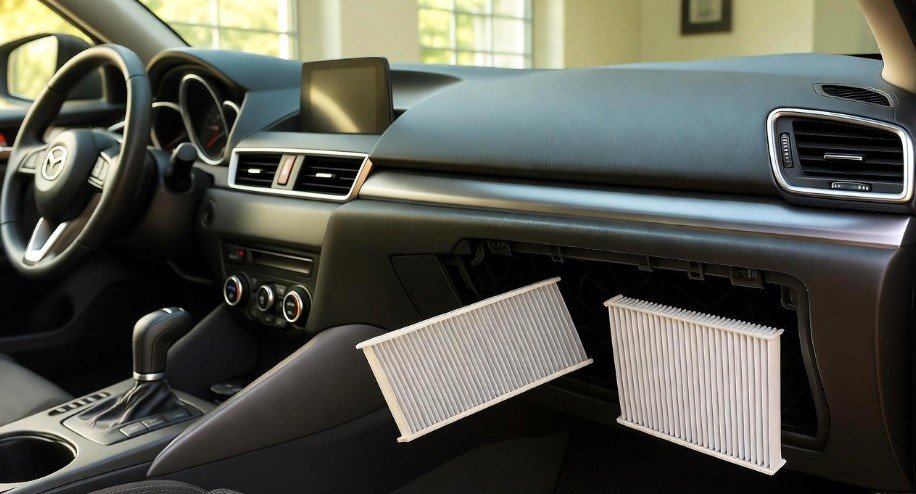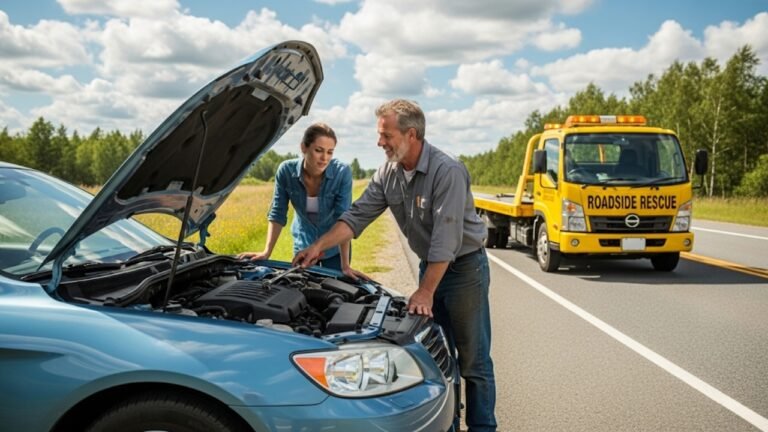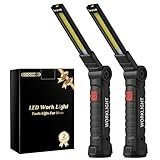How to Replace Cabin Air Filter Mazda 3: Step-by-Step Guide

When it comes to maintaining your Mazda 3, many car owners focus on oil changes, tire rotations, or brake inspections, but often overlook a small yet critical component: the cabin air filter. This unassuming filter plays a significant role in ensuring the air inside your vehicle remains clean and healthy. Think of it as the lungs of your car’s interior—trapping dust, pollen, and other airborne particles so that you and your passengers can breathe freely while on the road. Replacing the cabin air filter may seem daunting if you haven’t done it before, but with the right guidance, it’s surprisingly straightforward.
In this guide, I’ll walk you through how to replace the cabin air filter in a Mazda 3, step by step, with practical tips that make the process smooth and even satisfying. Whether you’re a seasoned DIYer or someone tackling car maintenance for the first time, this guide will help you restore fresh, clean air to your driving experience.
In This Article
- 1 Why Replacing the Cabin Air Filter Matters
- 2 Step 1: Gather the Necessary Tools
- 3 Step 2: Locate the Cabin Air Filter Housing
- 4 Step 3: Remove the Old Cabin Air Filter
- 5 Step 4: Clean the Filter Housing
- 6 Step 5: Install the New Cabin Air Filter
- 7 Step 6: Test the Airflow
- 8 Step 7: Dispose of the Old Filter Properly
- 9 Benefits of Regular Cabin Air Filter Replacement
- 10 How Often Should You Replace the Cabin Air Filter?
- 11 Common Signs That Your Cabin Air Filter Needs Replacement
- 12 Final Thoughts
- 13 Frequently Asked Questions (FAQs)
Why Replacing the Cabin Air Filter Matters
The cabin air filter is more than just a routine maintenance item. Over time, it accumulates dirt, pollen, dust, and other microscopic particles. If ignored, it can compromise the efficiency of your vehicle’s HVAC system, lead to unpleasant odors, and even exacerbate allergies. Imagine breathing through a dusty cloth—your Mazda 3’s air system can’t work efficiently if its filter is clogged.
Regularly replacing the cabin air filter ensures that the air you breathe is clean and that the ventilation system works at full capacity. It also protects your HVAC components from damage, potentially saving you money on costly repairs. For families, allergy sufferers, or anyone who enjoys a comfortable ride, changing this filter is a small task that provides a big reward.
Step 1: Gather the Necessary Tools
Before diving in, it’s important to prepare your workspace and tools. Having everything ready saves frustration and makes the process faster. For this task, you’ll typically need:
-
A screwdriver (usually Phillips or flathead)
-
A new cabin air filter compatible with your Mazda 3
-
A vacuum cleaner or compressed air for cleaning the filter housing
-
Optional: A flashlight to see inside the glove compartment area
Having these tools at hand is like setting out your ingredients before cooking—you want a smooth, efficient process without unnecessary interruptions.
Step 2: Locate the Cabin Air Filter Housing
The cabin air filter in a Mazda 3 is conveniently tucked away behind the glove compartment on the passenger side. Open the glove box and carefully remove any items stored inside. This step may feel mundane, but it’s crucial—having a clear area ensures you won’t knock anything over while working.
Many first-time DIYers feel a bit hesitant here, thinking the filter is hidden under layers of the dashboard. Rest assured, Mazda made this filter accessible for a reason. With a little patience and gentle maneuvering, you’ll quickly spot the housing cover secured with clips or screws.
Step 3: Remove the Old Cabin Air Filter
Once the glove compartment is empty, the next step is to remove the housing cover. Using your screwdriver, carefully loosen the screws or unclip the cover. Take your time—these parts are delicate and can break if forced.
After removing the cover, you’ll see the old filter nestled inside. Carefully pull it out, paying attention to the airflow direction marked on the filter. This little arrow is crucial—it ensures that the new filter is installed in the correct orientation so your HVAC system functions efficiently. At this stage, you might notice how dirty the old filter is, which can be quite eye-opening and a good reminder of why regular replacement matters.
Step 4: Clean the Filter Housing
Before sliding in the new filter, it’s essential to clean the filter housing. Dust and debris left behind can reduce the effectiveness of the new filter and potentially circulate unwanted particles into your car. A vacuum cleaner works best for this step. Take a few minutes to remove accumulated dirt and crumbs—think of it as tidying the soil before planting a fresh flower.
Cleaning this area not only improves air quality but also helps maintain the longevity of your Mazda 3’s ventilation system. Skipping this step is like painting over mold—it may look fine temporarily, but the problem persists underneath.
Step 5: Install the New Cabin Air Filter
Now comes the satisfying part: installing the new cabin air filter. Take your fresh filter and gently slide it into the housing. Remember the airflow direction arrow you noted from the old filter? Make sure the arrow points in the correct direction—toward the HVAC system—so the filter functions properly.
Do not force the filter into place. It should fit snugly but smoothly. Once it sits correctly, reattach the housing cover, securing the clips or screws you removed earlier. At this point, you may notice how effortless the airflow seems with a new filter in place compared to the old, clogged one. Think of it as opening a window after a long winter—suddenly, the air feels cleaner and fresher.
Step 6: Test the Airflow
After installation, it’s time to test the ventilation system. Turn on your Mazda 3’s air conditioning or heating system and observe the airflow. The air should move freely and feel noticeably fresher. Check for any unusual odors, rattling sounds, or reduced airflow.
If everything feels smooth and clean, congratulations—you’ve successfully replaced your cabin air filter. This simple maintenance task immediately enhances the quality of your car’s interior air, creating a healthier environment for you and your passengers. It’s also a small act of self-care that pays off every time you take a deep breath inside your Mazda 3.
Step 7: Dispose of the Old Filter Properly
Now that your new filter is in place, don’t forget about the old filter. It’s tempting to toss it in the trash, but consider checking local guidelines for recycling used filters. Proper disposal helps reduce environmental waste and keeps your routine maintenance eco-friendly.
Even if your local area doesn’t offer specialized recycling, sealing the old filter in a bag before discarding it prevents dust and debris from spreading. Think of it as cleaning up after a small but meaningful project—you’ve done something beneficial, and part of that responsibility is proper disposal.
Benefits of Regular Cabin Air Filter Replacement
Replacing your Mazda 3’s cabin air filter may seem like a minor task, but the benefits are substantial:
-
Improved air quality: Reduces allergens, pollen, and dust inside your vehicle.
-
Enhanced HVAC efficiency: Helps your heating and cooling system work optimally.
-
Reduced odors: Prevents musty smells caused by trapped particles.
-
Cost savings: Protects your HVAC components from strain and potential damage.
Think of this as preventative care. Just like brushing your teeth prevents cavities, replacing the cabin air filter regularly prevents bigger problems in your Mazda 3.
How Often Should You Replace the Cabin Air Filter?
For most Mazda 3 models, it’s recommended to replace the cabin air filter every 15,000 to 30,000 miles, depending on driving conditions. If you drive in urban areas with heavy traffic, or in rural areas with lots of dust and pollen, you may need to replace it more frequently.
Visual cues can also guide you: if the filter looks dirty, airflow feels weak, or there’s an unusual smell, it’s time for a replacement. Keeping a regular schedule ensures consistent air quality and keeps your car’s HVAC system running smoothly.
Common Signs That Your Cabin Air Filter Needs Replacement
Even if you haven’t reached the mileage threshold, there are key indicators that signal it’s time for a new filter:
-
Visible dirt and debris: Dust accumulation on the filter surface.
-
Reduced airflow: Weak air from vents even at high fan settings.
-
Unpleasant odors: Musty or stale smells inside the car.
-
Increased allergens: Sneezing, watery eyes, or irritation inside the vehicle.
Recognizing these signs early allows you to take action before your car’s air system becomes inefficient or uncomfortable.
Final Thoughts
Replacing the cabin air filter in your Mazda 3 is a small task that makes a significant difference. It’s quick, cost-effective, and can be completed with basic tools, yet the benefits—cleaner air, better HVAC performance, and a healthier interior—are immediate and noticeable.
By following this step-by-step guide, you not only maintain your vehicle’s performance but also create a safer and more comfortable environment for everyone on board. A clean filter may seem trivial, but its impact on daily driving is enormous. Remember, regular attention to small details like this adds years to your vehicle’s life and makes every drive more enjoyable.
Frequently Asked Questions (FAQs)
1. Why is it important to replace the cabin air filter in a Mazda 3?
Replacing the cabin air filter ensures clean air circulation inside your car, improves HVAC efficiency, and reduces allergens, dust, and unpleasant odors.
2. How often should the cabin air filter be replaced?
For most Mazda 3 models, replacement is recommended every 15,000 to 30,000 miles. Check your vehicle’s manual and adjust based on driving conditions.
3. Can I replace the cabin air filter myself?
Yes! With the right tools and instructions, replacing the filter is a simple DIY task that saves on labor costs.
4. What are the signs that indicate the filter needs replacement?
Signs include visible dirt on the filter, reduced airflow, musty odors, and increased allergens inside the car.
5. What tools do I need for this replacement?
You’ll need a screwdriver, a compatible cabin air filter, a vacuum cleaner, and optionally a flashlight for better visibility.
6. Does a dirty cabin air filter affect my car’s HVAC system?
Yes, a clogged filter can reduce airflow, strain the HVAC system, and potentially lead to expensive repairs.
7. How do I dispose of the old cabin air filter?
Check local recycling guidelines. If recycling is unavailable, seal the old filter in a bag before discarding it to prevent dust from spreading.
8. Can replacing the cabin air filter improve air quality immediately?
Absolutely! A new filter removes trapped particles, allergens, and odors, providing fresh, clean air as soon as it’s installed.






